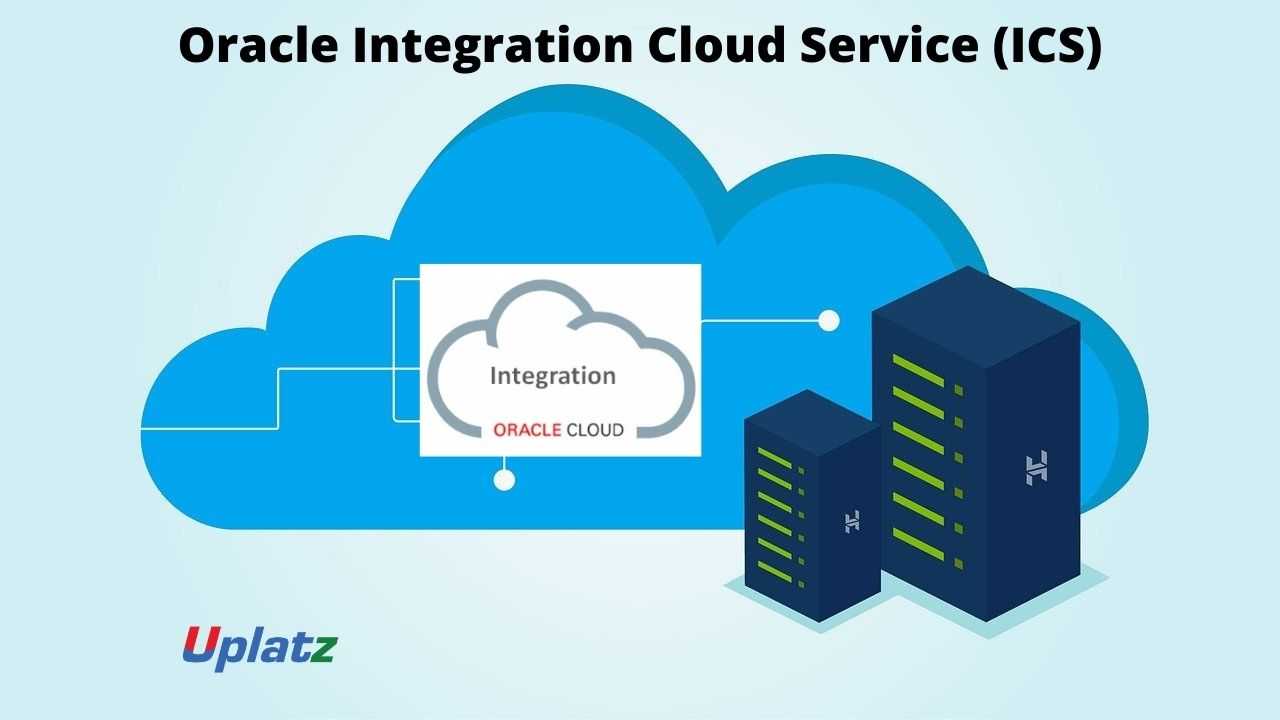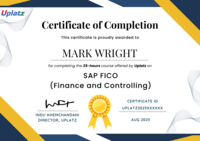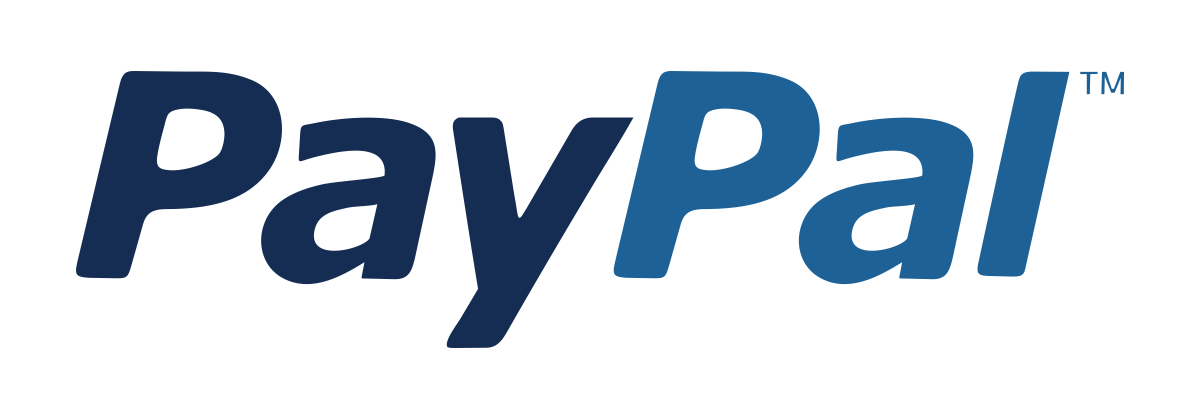Bundle Course - Oracle APEX and APEX Admin
Learn Oracle Application Express (APEX) from scratch & develop web-based applications. Manage APEX instances, configuration, metadata, user, workspacePreview Bundle Course - Oracle APEX and APEX Admin course
Price Match Guarantee Full Lifetime Access Access on any Device Technical Support Secure Checkout Course Completion Certificate 83% Started a new career
BUY THIS COURSE (
83% Started a new career
BUY THIS COURSE (GBP 22 GBP 49 )-
 79% Got a pay increase and promotion
79% Got a pay increase and promotion
Students also bought -
-

- Oracle Forms
- 10 Hours
- GBP 12
- 799 Learners
-

- Career Path - Oracle Consultant
- 200 Hours
- GBP 32
- 6123 Learners
-

- Oracle ICS (Integration Cloud Service)
- 20 Hours
- GBP 12
- 58 Learners

Uplatz provides this bundle course on:
1) Oracle APEX
2) Oracle APEX Administration
Oracle Application Express (APEX) is a free Oracle product that enables developers to quickly create web-based applications on an Oracle database by using just a web browser. The APEX tool runs in a web browser and allows the creation of web applications in a declarative manner, by simply selecting pre-built components, configuring them and bundling them up in a web application, all without the need to write too much code.
APEX is a web application that is tightly coupled to an Oracle database. It has several uses: you can use its SQL Workshop tool to query the database, modify its contents, or change its structure; you can use its Application Builder tool to create your own web applications that interact with the database, and you can run the web applications created by you and others.
The APEX application builder is especially interesting because it provides a simple, nontraditional way to build web pages. You do not specify code for the page directly; instead, you choose from a set of built-in templates. There is a template for the overall page and templates for each kind of component that you want to put on the page (such as reports, buttons, and so on). Each template has a set of properties, whose values determine where each component is located on the page, what it looks like, and how it behaves. You create a page simply by choosing templates for the components you want and assigning values to their properties.
The advantage of using an HTML generator such as APEX is that you can build web pages without any knowledge of HTML (or CSS, JavaScript, or PHP). Moreover, because APEX is tightly coupled to an Oracle database, it automatically handles the intricacies of database interaction. APEX makes it possible to easily create good-looking, highly functional, and database-aware pages with only a rudimentary knowledge of SQL.
Instance administrators manage an entire APEX hosted instance using the Oracle APEX Administration Services (Administration Services) application. Their key tasks are:
1) Understanding Administration Services
2) Managing Requests
3) Managing Feature Configuration
4) Configuring Oracle APEX Security
5) Configuring Oracle APEX Instance Settings
6) Purging Inactive Workspaces
7) Managing Public Themes
8) Managing Meta Data
9) Installing Exported Applications in Oracle Application Express Runtime Environment
10) Communicating Using Messages, Banners, and Resources List
11) Creating a Service Signup Wizard
12) Managing Schemas
13) Creating Workspaces in Administration Services
14) Managing Existing Workspaces
15) Managing Users Across an Oracle APEX Instance
16) Monitoring Activity Across an Oracle Application Express Instance
17) Configuring and Deleting Logs and Log Entries
Course/Topic 1 - Course access through Google Drive
-
Google Drive
-
Google Drive
Course/Topic 2 - Oracle APEX - all lectures
-
This video entails the terms Oracle Application Express (APEX) which is an easy to use platform for developing data-centric web-based applications. Oracle Application Express (APEX) is a low-code development platform that enables you to build scalable, secure enterprise apps, with world-class features, that can be deployed anywhere.
-
In the lecture you will learn about the App Builder which is a low code, high productivity integrated development environment where you can develop applications on top of your data.
-
This video shows Oracle Forms and Reports, there are several options available to you to modernize the web stack. Some of these options, place a facade on Oracle Forms, requiring customers to pay ongoing support and maintenance fees for Oracle Forms and Reports as well as the Web logic licensing to support these technologies.
-
In this video you will learn about build pages in the Page which is Designer by dragging components from the Components palette and positioning them on the canvas to create business objects, design forms and to organize page elements.
-
In this tutorial you will see master detail form which reflects a one to many relationships between two tables in a database. Typically, a master detail form displays a master row and multiple detail rows. When you create a master detail form using the Create Page or Create Application Wizards, you choose the tables on which to build the master form and the detail form.
-
In this video you will learn about Column attributes enable developers to control the display, features, and column behavior. Developers edit Column attributes to alter nearly all aspects of column behavior, including altering the layout and appearance, defining column links, creating column filters, and adding support for export and printing.
-
In this tutorial you will learn about an interactive grid presents users which is a set of data in a searchable, customizable report. In an editable interactive grid, users can also add to, modify, and refresh the data set directly on the page and the interactive reports enable the user to customize the appearance of the data through searching, filtering, sorting, column selection, highlighting, and other data manipulations.
-
In this tutorial we will see Oracle Application Express (APEX) has integrated charting which is based on Oracle JavaScript Extension Toolkit (JET) Data Visualizations. For more information on Oracle JET and the Data Visualizations components, please refer to the Oracle JET Get Started documentation and oj Chart API guide.
-
This Video Covers Menu in Oracle Apps Menu which is nothing but a logical or hierarchical listing of functions (forms) so that the user can easily navigate through the forms once he is in a responsibility. Every responsibility will be assigned only one main menu. Under that main menu, you can have either have other sub menus or functions.
-
In this tutorial you will cover APEX Tree region is intentionally very simple. It is just for display of a hierarchy with simple single selection or navigation. The tree View widget can do much more but the “documentation” is only in the source file. Also it can be difficult to change some settings because you don’t have direct access to how the widget is created
-
This Tutorial Video teach you about Oracle provides a number of authentication and authorization which is a mechanisms to meet user requirements, from simple locally based password authentication to centralized directory service integration to handle both authentication and authorization.
-
In this video you will learn about the page which is the basic building block of a database application. Individual pages are organized using containers called regions.
-
In this session you will learn about the A template has what you need to get started with a site, including the site code framework, a default site with sample pages and content, a theme with styling, resources such as images, and even custom components. A theme defines the general look-and-feel the overall style of a site, including color scheme, font size, font type, and page backgrounds.
-
In this Video you will learn about the Dynamic actions which provide a way to define complex client-side behavior declaratively without the need for JavaScript. Using the Dynamic Action Create wizard, you specify an action that is performed when a defined set of conditions occur. You can also specify which elements are affected by the action, and when and how they are affected.
-
This Video Tutorial will teach you about the validation which is an edit check. Validations specific to a single item are page item validations. Validations that apply to an entire page are page validations. Validations for tabular forms specific to a single column are column level validations. Validations for tabular forms that do not apply to a single column are tabular form row validations.
-
This session will teach you about the page process which performs an action at a specified point during the rendering or submission of the page. For example, you can create a page process to execute logic or to make a call to the Application Express engine. A page process is a unit of logic that runs when a specific event occurs, such as loading or submitting a page.
-
This video will teach you about the how to create a Branch Process to open another page after submitting the current page. Because a Branch process executes on the page submit. Using the Branch Process in Oracle Apex, you can open a dialog page or a normal page
-
This video will teach you about the Shared components which are common elements that can be display or be applied on any page within an application. You can use the tools and wizards on the Shared Components page either at the application-level or on specific pages.
-
This video will teach you about the a list of values (LOV) which is a static or dynamic set of values used to display a specific type of page item, such as popup lists of values, a select list, a check box, a radio group, or multiple select lists.
-
This tutorial will teach you about the use of Performance Management Architect to create Essbase (ASO) and Essbase (BSO) applications, providing reporting based on the dimensionality of Essbase as well as other applications, such as Planning or Profitability and Cost Management.
-
This video will teach you about the Global Page which is a special page. Unlike all other pages it has no processes, validations or branches. It functions as a master page in that APEX renders all the components you add to this page onto every page within your application
-
This tutorial will teach you about the export an application and which is related files, you must import them into the target Oracle Application Express instance and then install them.
Course/Topic 3 - Oracle APEX Administration - all lectures
-
Oracle APEX is a fully integrated, low-code development platform for building, deploying, and maintaining data-driven applications.
-
In this session, you will learn about the installation of windows 10 on Oracle VM.
-
In this session, you will learn about the Installation of Oracle Database 19c and Create Database.
-
In this session, you will learn about the Installation and Configuration of APEX 20.1.
-
In this session, you will learn about the Installation of Tomcat.
-
This video will give an introduction to ORDS. It then shows you how to install ORDS feasible for a production environment using WebLogic Server and an Oracle 12c.
-
This section describes tasks an Oracle Application Express administrator performs when administering an Oracle Application Express hosted instance.
This comprehensive course is designed to provide participants with an in-depth understanding of Salesforce Apex and Apex Administration. The key objectives include, Understanding Apex Fundamentals, Developing Apex Code Efficiently, mastering Apex Trigger Design, Explore Advanced Apex Features, and understanding Apex Administration. This course is ideal for Salesforce developers, administrators, and IT professionals seeking to deepen their expertise in both the development and administration of Apex within the Salesforce ecosystem. By the end of the course, learners will be proficient in both the development and administration aspects of Apex within the Salesforce platform.
-Key Course Objectives-
1) Oracle APEX:
2) Introduction to Oracle APEX (Application Express)
3) Overview of Oracle APEX architecture
4) Creating and managing workspaces in Oracle APEX
5) Building interactive web applications using Oracle APEX
6) Designing forms, reports, charts, and dashboards in Oracle APEX
7) Utilizing SQL Workshop for data management
8) Implementing security measures and user roles in Oracle APEX
9) Integrating Oracle APEX applications with databases and other systems
10) Customizing application themes and styles
11) Advanced features and plugins in Oracle APEX
12) Best practices for performance optimization in Oracle APEX applications
13) Oracle APEX Administration:
14) Oracle APEX installation and configuration
15) Managing application environments and instances
16) Monitoring and troubleshooting Oracle APEX applications
17) Backup and recovery strategies for Oracle APEX
18) Workspace and user management in Oracle APEX
19) Implementing security measures and access controls
20) Scaling Oracle APEX applications for enterprise deployments
21) Performance tuning and optimization techniques for Oracle APEX
22) Upgrading Oracle APEX versions and patches
23) Implementing governance and compliance measures in Oracle APEX
24) Best practices for Oracle APEX administration and maintenance
These topics cover both the development and administrative aspects of Oracle APEX, providing participants with the knowledge and skills needed to effectively build, manage, and optimize web applications using Oracle's low-code development platform.
Here’s a suggested syllabus for a Bundle Course on Oracle APEX and APEX Administration, broken down paragraph-wise for clarity:
Course Title: Bundle Course - Oracle APEX and APEX Admin
Course Overview
This comprehensive course is designed to equip participants with the skills necessary to develop, deploy, and administer applications using Oracle Application Express (APEX). Covering both application development and administration, the curriculum provides practical knowledge and hands-on experience, enabling students to build robust web applications efficiently.
Module 1: Introduction to Oracle APEX
In this introductory module, students will explore the fundamentals of Oracle APEX, including its architecture, features, and benefits. The course will cover the development environment and tools available in APEX, as well as its integration with Oracle databases. By the end of this module, students will have a solid understanding of what APEX is and how it fits into the Oracle ecosystem.
Module 2: Setting Up the APEX Environment
This module focuses on the installation and configuration of the Oracle APEX environment. Students will learn how to set up APEX on Oracle Database, configure workspaces, and create users. Practical exercises will guide them through the initial setup process, ensuring they can effectively manage their development environment.
Module 3: Building Your First APEX Application
In this hands-on module, students will learn how to create their first APEX application. Topics will include the application development process, using templates, and customizing user interfaces. By the end of this module, students will have built a simple but functional web application, gaining confidence in their development skills.
Module 4: Working with APEX Components
This module delves into the various components of APEX, such as pages, regions, items, and processes. Students will learn how to utilize these components to create interactive and dynamic applications. Practical exercises will allow students to implement forms, reports, and charts within their applications.
Module 5: Data Management and SQL in APEX
Focusing on data management, this module will cover how to interact with databases using SQL and PL/SQL within APEX. Students will learn to create and manage tables, views, and data models. Hands-on projects will involve writing SQL queries and PL/SQL code to manipulate data effectively.
Module 6: Advanced APEX Features
In this module, students will explore advanced features of APEX, such as dynamic actions, interactive reports, and web services integration. They will learn how to enhance application functionality and user experience through these advanced features. Practical exercises will reinforce their understanding of these capabilities.
Module 7: Introduction to APEX Administration
Shifting focus to administration, this module introduces the role of an APEX administrator. Students will learn about user management, workspace administration, and application security. The importance of maintaining a secure and efficient APEX environment will be emphasized through practical examples.
Module 8: Managing APEX Applications
This module covers the lifecycle of APEX applications, including deployment, version control, and performance tuning. Students will learn how to monitor applications and troubleshoot common issues. Hands-on exercises will provide experience in managing and optimizing APEX applications effectively.
Module 9: Customizing APEX Applications
In this module, students will explore ways to customize APEX applications using JavaScript, CSS, and HTML. They will learn how to enhance the look and feel of their applications and implement client-side validations. Practical projects will allow students to apply their creativity and technical skills in customization.
Module 10: Capstone Project
The final module focuses on a capstone project where students will apply their skills to develop a complete APEX application. They will work individually or in teams to design, implement, and present their applications, demonstrating their understanding of both development and administration concepts.
Course Conclusion and Future Directions
In the concluding session, students will reflect on their learning experiences and discuss emerging trends in Oracle APEX and application development. Guidance on further learning resources, certifications, and career paths in APEX development and administration will be provided to support their continued growth.
Assessment and Certification
Participants will be assessed through quizzes, practical assignments, and the final capstone project. Upon successful completion of the course, students will receive a certification recognizing their proficiency in Oracle APEX and APEX Administration.
This syllabus provides a structured approach to mastering Oracle APEX, preparing students for real-world challenges in application development and administration.
Oracle Application Express (APEX) is a popular low-code development platform for building scalable and secure applications using SQL and PL/SQL. APEX Admin focuses on managing and administering APEX environments. Combining certifications in both Oracle APEX development and administration can significantly enhance your capabilities and career prospects. Here are some of the top certifications for Oracle APEX and APEX Admin, along with their benefits:
Top Certifications in Oracle APEX & APEX Admin
1. Oracle APEX Developer Certified Associate
Overview: This certification focuses on the skills required to develop applications using Oracle APEX. It covers fundamental concepts, including creating, modifying, and deploying APEX applications.
Benefits:
a).Development Expertise: Validates your ability to build and manage applications using Oracle APEX, covering essential aspects like user interfaces, workflows, and application logic.
b).Career Advancement: Positions you for roles such as Oracle APEX Developer, Application Developer, or Business Application Specialist.
c).Skill Recognition: Provides a recognized credential that demonstrates your proficiency in Oracle APEX development, enhancing your professional credibility.
2. Oracle APEX Developer Certified Professional
Overview: This advanced certification focuses on more complex aspects of APEX development, including advanced SQL and PL/SQL integration, performance tuning, and application optimization.
Benefits:
a).Advanced Skills: Confirms your advanced knowledge and skills in developing high-performance and optimized APEX applications.
b).Career Growth: Opens up opportunities for senior developer roles, such as Senior APEX Developer or Lead Application Developer.
c).Professional Development: Enhances your capability to handle complex development scenarios and contribute to high-level projects.
3. Oracle Application Express Administration Certified Associate
Overview: This certification focuses on the administrative aspects of managing Oracle APEX environments. It covers tasks such as installation, configuration, and management of APEX instances.
Benefits:
a).Administrative Expertise: Validates your skills in managing and administering Oracle APEX environments, including user management, security, and system configuration.
b).Career Opportunities: Positions you for roles such as APEX Administrator, Database Administrator, or IT Manager specializing in APEX environments.
b).System Management: Provides skills necessary for maintaining and optimizing APEX instances, ensuring smooth and secure application operations.
4.Oracle APEX Application Development and Administration Certified Specialist
Overview: This combined certification covers both development and administrative aspects of Oracle APEX. It includes skills for building applications and managing APEX environments.
Benefits:
a).Holistic Expertise: Demonstrates your comprehensive skills in both developing and administering Oracle APEX applications.
b).Versatile Role: Positions you for roles that require expertise in both application development and system administration, such as APEX Solutions Architect or Senior Application Manager.
c).Enhanced Capability: Provides a broad skill set that improves your effectiveness in handling diverse tasks related to Oracle APEX.
5. Oracle Cloud Platform Application Development Specialist
Overview: Focuses on developing applications using Oracle Cloud Platform, including Oracle APEX. This certification covers cloud-based application development and management.
Benefits:
a).Cloud Proficiency: Validates your ability to develop and manage applications in the cloud, including Oracle APEX.
b).Career Advancement: Positions you for roles that involve cloud-based application development and management, such as Cloud Application Developer or Cloud Solutions Architect.
c).Industry Relevance: Provides a credential relevant to the growing field of cloud computing and application development.
By obtaining these certifications, you can enhance your skills in Oracle APEX, position yourself for advanced roles, and contribute to the successful development and management of APEX applications in various organizational settings.
After completing a course bundle combo focused on Oracle APEX (Application Express) and APEX Admin, individuals can pursue specialized roles in database application development, administration, and management. Here are typical job roles and potential salary ranges associated with these certifications:
a).Oracle APEX Developer-Salaries for Oracle APEX developers can vary widely based on experience and location. On average, APEX developers can earn between $70,000 to $130,000 per year.
b).APEX Application Administrator- Salaries for APEX administrators typically range from $75,000 to $140,000 annually.
c).Database Administrator (DBA) with APEX expertise- Salaries for DBAs with Oracle APEX skills can range from $80,000 to $150,000 per year.
d).Business Intelligence (BI) Developer with APEX-Salaries for BI developers with Oracle APEX expertise can range from $75,000 to $140,000 annually.
e).Web Application Developer (Oracle APEX)-Salaries for web application developers specializing in Oracle APEX can range from $70,000 to $130,000 per year.
f).Technical Consultant - Oracle APEX- Salaries for technical consultants specializing in Oracle APEX can vary widely based on consulting firm size, client base, and project scope. Generally, salaries range from $80,000 to $160,000 per year.
These salary ranges are approximate and can vary based on factors such as geographic location, industry sector (technology, finance, healthcare), years of relevant experience, specific Oracle APEX certifications, and additional skills in database administration, business intelligence, or cloud computing. Advanced certifications, continuous professional development, and proficiency in emerging technologies can further enhance career prospects and earning potential in Oracle APEX and APEX Admin roles.
Q1.What is Oracle APEX, and what are its key features? Answer: Oracle APEX (Application Express) is a low-code development platform that enables users to build web-based applications quickly and with minimal coding. Key features include:
a).Low-Code Development: Allows rapid application development with drag-and-drop components.
b).Responsive Design: Supports responsive web design for applications that work on various devices.
c).Integration: Seamlessly integrates with Oracle databases and other Oracle tools.
d).Security: Provides robust security features including authentication and authorization mechanisms.
Q2. Explain the architecture of Oracle APEX. Answer: Oracle APEX is built on a three-tier architecture:
a).Client Tier: The end-user interface accessed via a web browser.
b).Application Tier: The APEX runtime engine running within Oracle WebLogic Server, which processes user requests and interacts with the database.
c).Database Tier: The Oracle Database where APEX applications and metadata are stored. APEX utilizes the Oracle database's capabilities for storing and retrieving data.
Q3. How do you create a new application in Oracle APEX? Answer: To create a new application in Oracle APEX:
Log in to the APEX workspace.
Click on the “App Builder” section.
Select “Create” and choose “Application.”
Use the “Create Application Wizard” to define the application type, name, and features.
Add pages to the application (e.g., forms, reports).
Configure application settings and run the application to test it.
Q4.What is a Page Designer in Oracle APEX, and what are its main components?
Answer: Page Designer is the main tool for building and customizing APEX pages. Its main components are:
a).Rendering: The section where you can add and configure page items and regions.
b).Processing: Handles server-side processing such as data validation and business logic.
c).Shared Components: Contains global components like lists of values, templates, and themes used across the application.
d).Layout: Provides options for arranging the layout of the page, including regions and items.
Q5. What are Interactive Reports in Oracle APEX, and how are they used?
Answer: Interactive Reports are a feature in Oracle APEX that allows users to create customizable reports with advanced filtering, sorting, and aggregation options. Users can:
Customize report views using the built-in user interface.
Save custom report settings for personal use or share with others.
Export report data in various formats like CSV, Excel, and PDF.
Q6.What are the main responsibilities of an Oracle APEX administrator?
Answer: The main responsibilities of an Oracle APEX administrator include:
a).Workspace Management: Creating and managing APEX workspaces for different teams or projects.
b).User Management: Managing user roles and permissions within APEX.
c).Application Deployment: Handling the deployment and migration of APEX applications across different environments (development, testing, production).
d).Performance Tuning: Monitoring and optimizing the performance of APEX applications.
e).Backup and Recovery: Ensuring proper backup and recovery procedures for APEX applications and data.
Q7. How do you manage users and roles in Oracle APEX? Answer: To manage users and roles in Oracle APEX:
a).Login as APEX Admin: Access the APEX Administration page.
b).Navigate to Manage Users and Groups: Go to “Administration” > “Manage Users and Groups.”
c).Add or Edit Users: Create new users or modify existing ones. Assign roles and privileges as needed.
Manage Roles: Define and assign roles to control access to various application components and administrative functions.
Q8. How do you configure and manage application security in Oracle APEX?
Answer: To configure and manage application security:
Define Authentication Schemes: Go to “Shared Components” > “Authentication Schemes” and set up the desired authentication method (e.g., Application Express, LDAP).
Set Up Authorization Schemes: Go to “Shared Components” > “Authorization Schemes” to define access control rules for different parts of the application.
Implement Page and Item Security: Configure security at the page or item level to control visibility and access.
Audit and Monitor Security: Regularly review security settings and use APEX’s monitoring tools to track access and usage.
Q9.What are the different types of APEX components and their uses?
Answer: APEX components include:
A).Regions: Sections of a page used to display content such as reports, forms, and charts.
b).Items: Individual user interface elements such as text fields, buttons, and select lists.
c).Processes: Server-side logic that performs actions such as data validation or processing after form submission.
d).Dynamic Actions: Client-side logic that responds to user interactions without requiring a full page refresh.
e).Lists of Values (LOVs): Provide predefined options for dropdowns and other selection fields.
Q10. Explain the concept of Websheets in Oracle APEX.
Answer: Websheets are a feature in Oracle APEX that allows users to create collaborative web-based applications without needing extensive programming knowledge. They are designed for business users to build and manage data-centric applications, providing a more intuitive and straightforward way to manage data and create reports.









